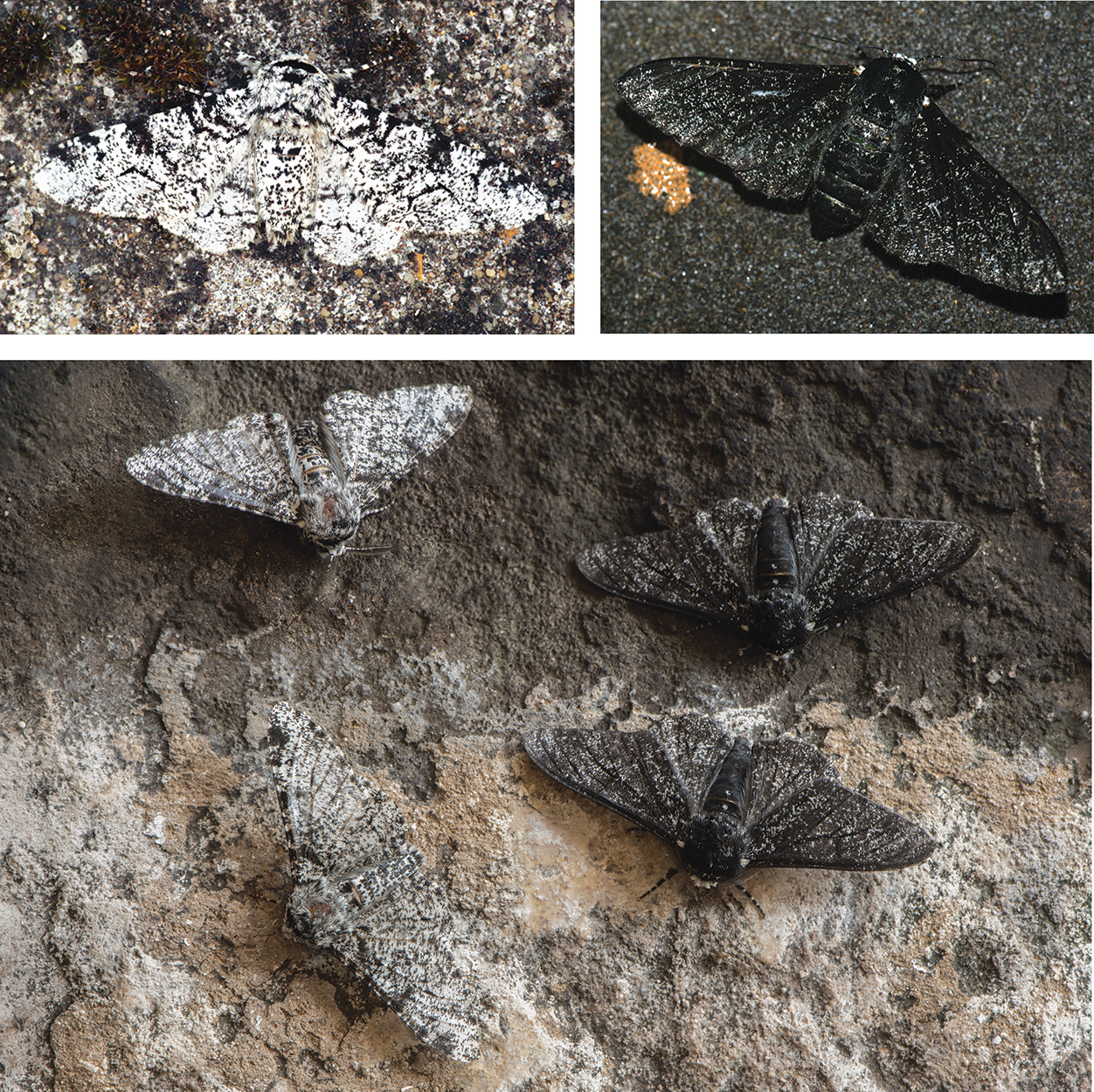
Industrial
Melanism in Pepper Moths (Biston betularia)
Prior to the Industrial Revolution of the
mid-1800s in Great Britain, birch and other tree species
were typically covered with lichens, which produced a
mottled pattern against which white Pepper Moths (Biston
betularia) were well-camouflaged [upper left].
Insect collections from the period show a small number of melanic
(black) forms [upper right], which were thought to be a
distinct species, carbonaria. The difference turns
out to be allelic variation at a single locus, with the
black alleles dominant to white. As the Industrial
Revolution progressed, factories in the English Midlands
(Birmingham and elsewhere) produced large quantities of soot
that settled on trees and blackened large sections of
forest. Against such environmental backgrounds, the melanic
form is at a selective advantage over the white form with
respect to avian visual predators [bottom]. [This can be
shown experimentally]. The frequency of the melanic form
increased rapidly (as shown by insect collections) and
nearly replaced the white form in some areas. Pollution
control measures, including scrubbers on smokestacks,
beginning in the mid-20th century, allowed replacement of
the blackened trees with new forests of white trees. The
white morph once again gained a selective advantage over the
melanic form, and has increased in numbers.
Natural Selection on the Pepper Moth is one of the
outstanding example of Ecological
Genetics, and has been studied for many
decades.